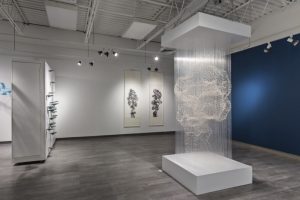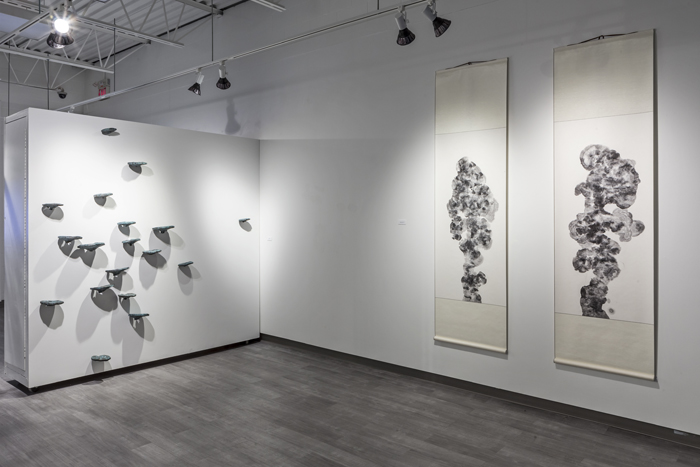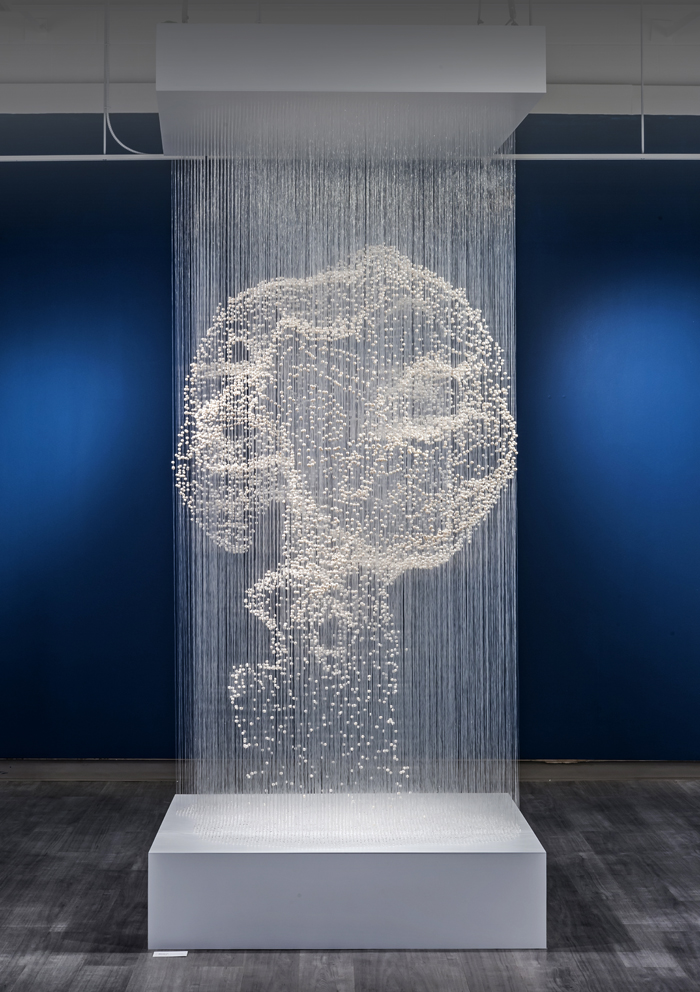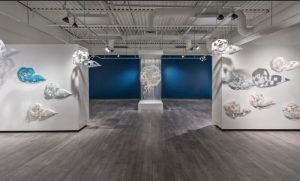Between Water and Stone
CHAI DUNCAN
curator
Xiaojing Yan is a contemporary Chinese-Canadian visual artist whose practice utilizes techniques and forms from tradional Chinese culture but processes all the art she creates through a decidedly contemporary set of filters. The layering of traditional ideas and techniques with contemporary approaches infuse the works in Hybrid Vigour with a delicious complexity that is at once aesthetically arresting and conceptually rich. While not the central subject of her practice, Yan’s experience of immigration from China to Canada is often reflected in one or more aspects of her work. Having lived here for over twelve years her sense of belonging is still in flux and she likes it that way, stating in an interview that “due to the uprooted experience, my feeling of home is different than for people who have grown up here. I still have the traveller’s curiosity, the continuing feelings of freshness, search, surprise and freedom”

Many of those sensibilities are successfully translated into the exhibition’s central piece of sculpture: Cloud Cell, 2014. The work presents as an apparition floating in the space between two pure white aluminum rectangular forms. Stretched between the forms are thousands of monofilament threads upon which have been adhered over 13,000 fresh water pearls. These pearls generate the three dimensional image of a Scholar’s Stone floating in space. The scholar’s stone is a stone shaped by water erosion and other forces of nature into surprising shapes and textures according to Yan. These stones can be small and sit on a desk or quite large and be the central focal point in a traditional Chinese garden. In either case they are there to inspire contemplation and meditation. But the cloud cell also can be read quite differently: as a billowing cloud certainly, but also as the more menacing mushroom cloud arising out of a nuclear explosion. Ideas of permanence, family and tradition manifest in the stone, layered upon ideas of fluid ephemerality found in clouds and vapor is but one duality the artist has mined to reflect her hybrid cultural identity.

The dual reading found in Cloud Cell is mirrored in Cloud Cell (Scroll), 2014 and Cloud Cell (V-VIII), 2014. All these works were created using traditional sumi inks on rice paper (scrolls) and on Yupo paper (V-VIII), yet their abstracted cloud-like forms reflect an approach unique to the artist and gestures toward a tenuousness that can be found in the experience of immigration.
The video work Ink-Water-Stone, 2014, also mirrors some of this layering but in a completely dynamic and energetic way. Yan has cited the forms observed when washing her brushes in water as inspiration for this work. The enchanting plumes of ink swirling within the glass, always in flux, always in a state of transformation became manifest in the frame captures of a fountain gushing eternally; floating and falling regenerating and transforming itself into whatever the imagination of the viewer envisions. The ink, water and stone are connected in the context of this exhibition in the methods Yan employs but also in the way many of the frames of the video echo the image of the scholar’s stone and the undulation of a thunderhead.

Regarding her methods and materials Yan states: “When I have an idea, I need to find the corresponding material, form, colour and even display method to express my thoughts. Choosing the material is like choosing the right word from my vocabulary. As well I am creating works in a different cultural context. In this sense, translation is not only from one language to another but also from one culture to another…[these] methods are all part of my vocabulary. I am learning new words all the time. The more I know the more articulately my work can express my thoughts.”
The strength with which Xiaojing Yan expresses these thoughts is formidable. Her fluency with her chosen material is compelling. The term hybrid vigour refers to an organism that is made stronger than the sum of its parts due to the diversity of its inherited gene pool. We chose this as the exhibition title because I believe that as an artist Xiaojing displays a cultural hybrid vigour in the way she is a bridge connecting her traditional and adopted homes. She is neither here nor there but suspended between the two worlds in a new place with a unique and original perspective to share.

